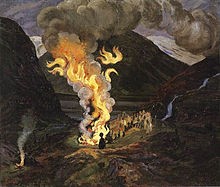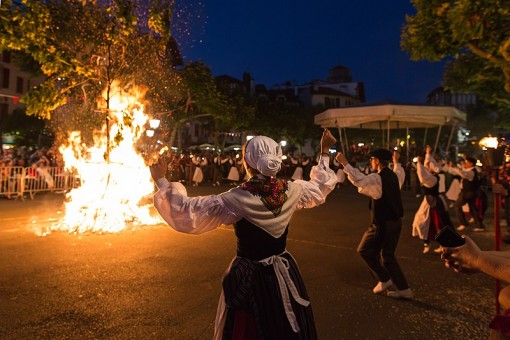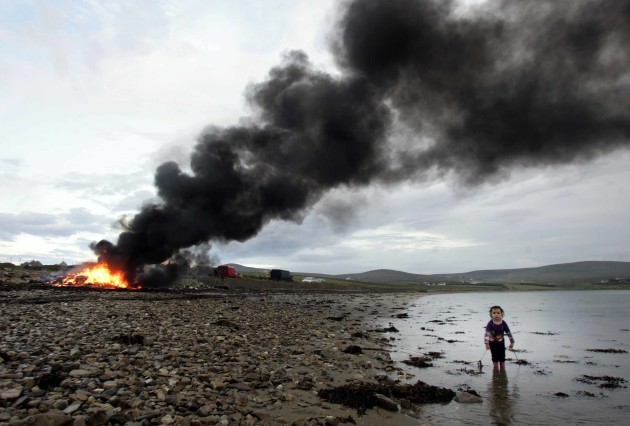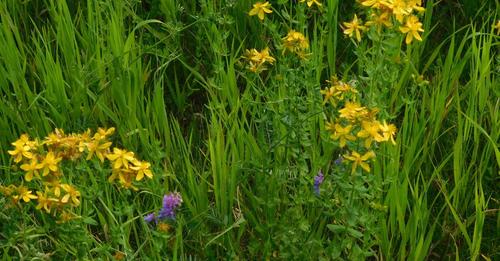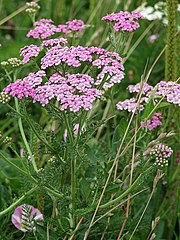At sunset on June 23rd an ancient fire festival is celebrated in many countries across the world. This midsummer festival has been known as Bonfire Night, and also Saint John’s Eve.
In Croatia, the feast is called Ivanje (Ivan being Croation for John). It is celebrated in mostly in rural areas. Festivals celebrating Ivanje are held across the country. According to the tradition, bonfires (Ivanjski krijesovi) are built on the shores of lakes, near rivers or on the beaches for the young people to jump over the flames.
The Danes often meet with family and friends to have dinner together. If the weather is good, they then proceed to a local bonfire venue. According to popular belief, St John’s Eve was charged with a special power where magical forces were also at work. People believed that the witches flew past on their broomsticks on their way to the Broken.
In some rural parts of Ireland, particularly in the north-west, Bonfire Night is held on St. John’s Eve, when bonfires are lit on hilltops. Many towns and cities have “Midsummer Carnivals”, with fairs, concerts and fireworks, around the same time. In County Cork in Southwest Ireland & County Louth in Northeast Ireland the night is commonly referred to as Bonfire Night and is among the busiest nights of the year for the fire services.
Bonfire ashes would be scattered on the crops for good luck. Most troublesome local weeds would be burned in the bonfire to help stave them off. People might strike each other lightly with hocusfian (this may be the stalks of gunnera or giant rhubarb plants growing along the riverbanks) to ward off future illnesses. Farmers walk through their fields with lit torches and then toss those torches on the bonfire for crop blessing.
In coastal areas of Ireland, fishermen’s boats and nets would be blessed by priests on St John’s Eve. A communal salmon dinner was traditionally served on this day in County Antrim. The sweet milky dish called goody was also served, which sometimes would be prepared at the bonfire in a large pot to be served to younger people.
Traditionally, several species of plants are collected on St. John’s Eve. These vary from area to area, but mostly include fennel, rue and rosemary. On the Feast of St. John, it is customary to gather the perennial herb St. John’s Wort. Since medieval times, the herb has been hung over doors, windows and icons for protection.
Yarrow has been used since ancient times for healing wounds, and its essential oil has anti-inflammatory properties. Yarrow was also used as a ward against evil, and traditionally it was burned on the eve of St John’s Day.
Bracken (Pteris aquilina) is sometimes called “brake” or “female fern”. The minute spores of this fern were reputed to confer invisibility on their possessor if gathered at the only time when they were said to be visible, i.e., on St. John’s Eve at the precise moment at which the saint was born.
In Denmark, the celebration is called sankthans or sankthansaften (“St. John’s Eve”). It is the day when the medieval wise men and women would gather special herbs that they needed for the rest of the year to cure people.
On the island of Puerto Rico, which had been named San Juan Bautista, after the saint, a night-long celebration, called “La Noche de San Juan” is held. After sunset, people travel to a beach or any accessible body of water (e.g. river, lake or even bathtub) and, at midnight, fall backwards into it three, seven or twelve times. This is done to cleanse the body from bad luck and give good luck for the following year.
The traditional midsummer party in Spain is the celebration in honor of San Juan This is especially strong in north-western areas of Spain where San Xoán festivals take place all over the region; bonfires are lit and a set of firework displays usually takes place.
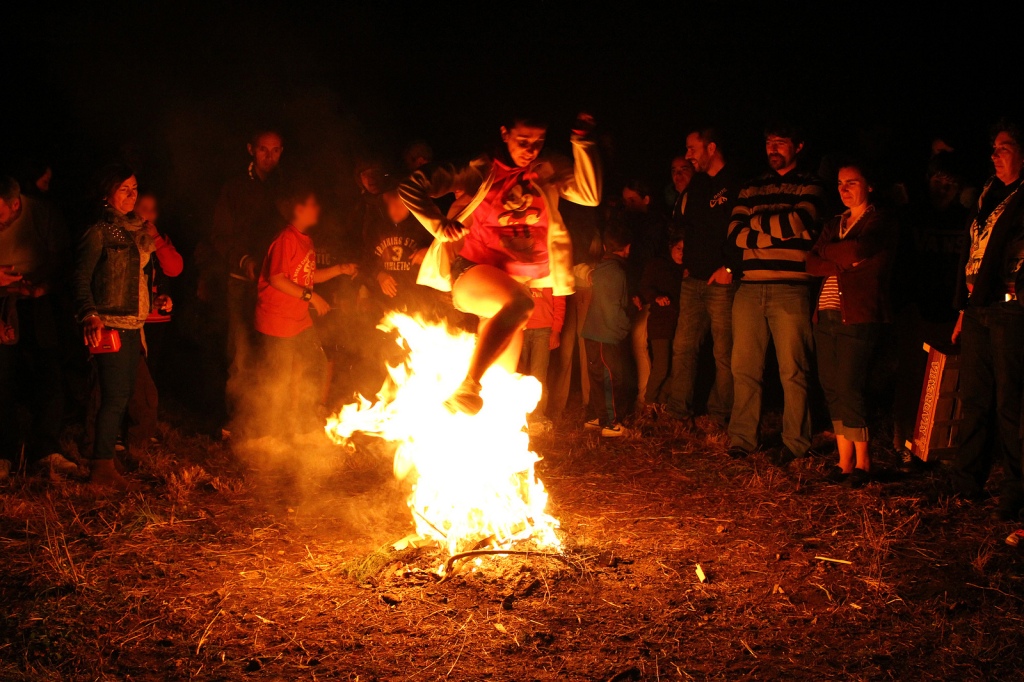
Many other cities and towns all across Spain having their own unique traditions associated with the festival. Bonfires of Saint John are the most important festival, and take place from June 20th to June 24th.
Bonfires are also used in the Basque Country to celebrate San Juan Eguna (the feast of St. John the Baptist), which marks the Basque Summer Solstice. In some towns the celebration is supplemented with more festivities and dances.
In Castille and Leon it is highlighted the Firewalking Festival where barefoot men cross the live coals of a prepared bonfire.
Historically, Saint John’s Eve, as well as the night of the feast day, has been venerated in the practice of Vodou (or voodoo) in Louisiana. The word Vodou is Creole French (Kreyol), of West African origin, meaning “spirit” or “god” and is the name of an animist, spiritual folkway practice which features elements of traditional African spirituality. Roman Catholic iconography became part of these practices during the Diaspora that spread the African people and their traditions all over the Caribbean, Central and South America.
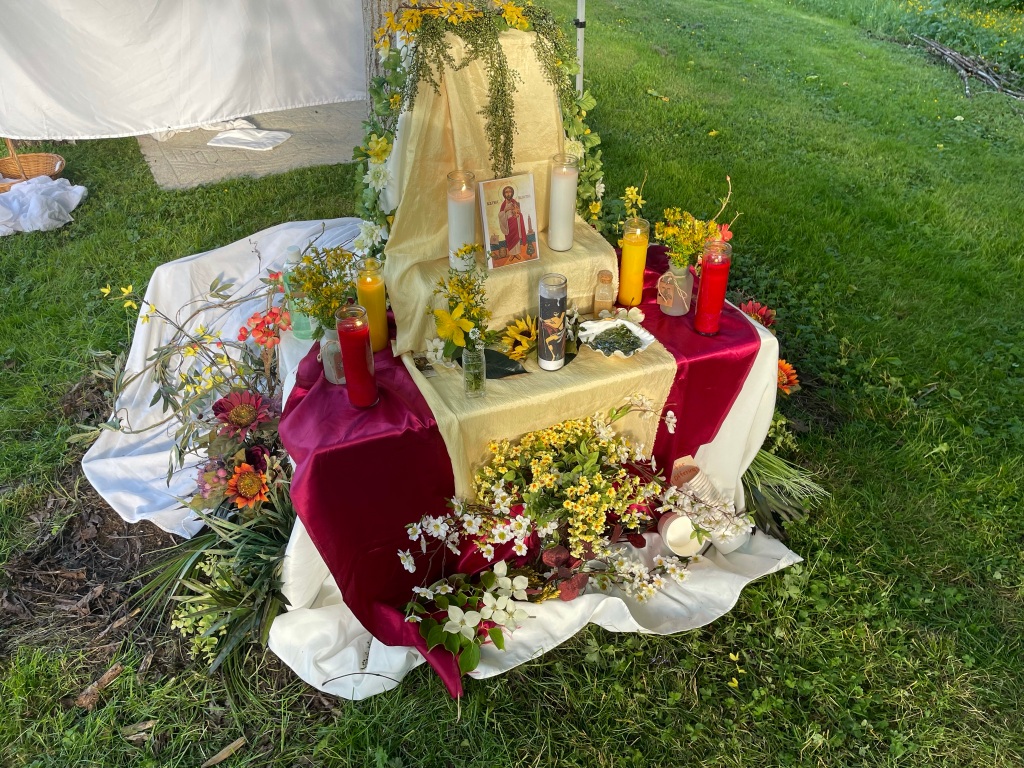
Famous 19th century names in the practice of New Orleans Vodou are the original Doctor John and Marie Laveau, the famous Vodou priestess who is said to have held ceremonies at the lake end of Bayou St. John, commemorating St. John’s Eve. Quite a few New Orleans residents keep these traditions alive today.
Vodou priestess Sallie Ann Glassman performs a cleansing ritual on St. John’s Eve on the bayou’s Magnolia footbridge with participants all wearing white and invoking the spirit of Marie Laveau as the sun goes down. Drumbeats and dancing continue late into the evening.
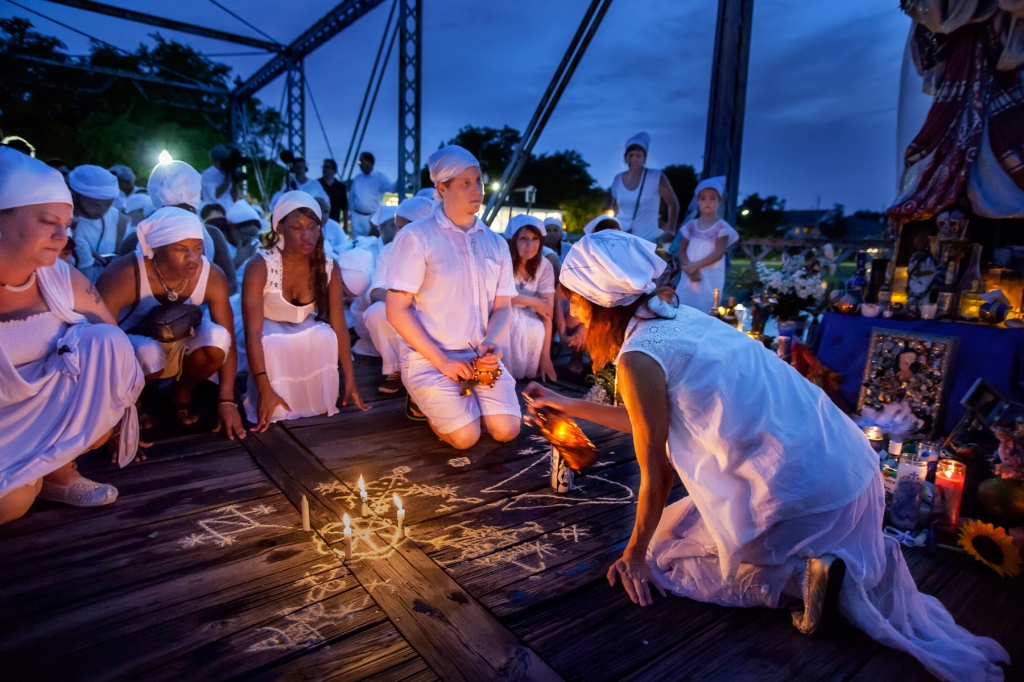
The rich history of this day lives on in each celebration and in the heart of each celebrant. In whatever way you carry the flame forward, we wish you all the blessings and the bounty that the Midsummer season brings!

